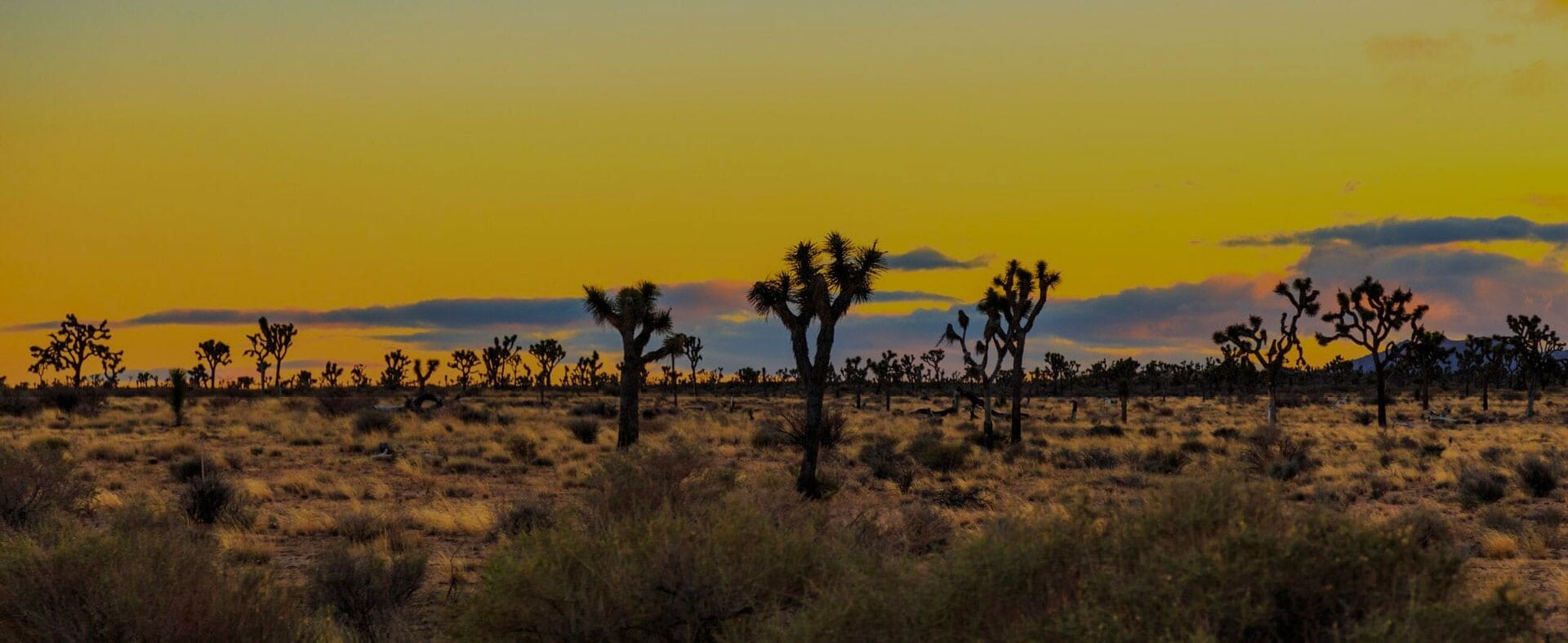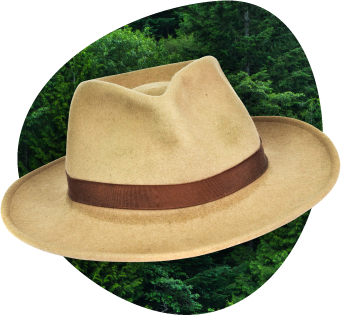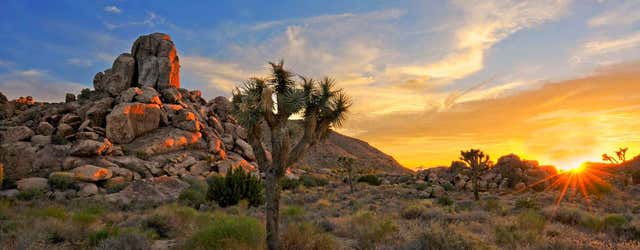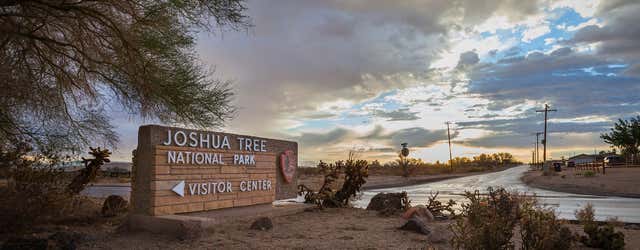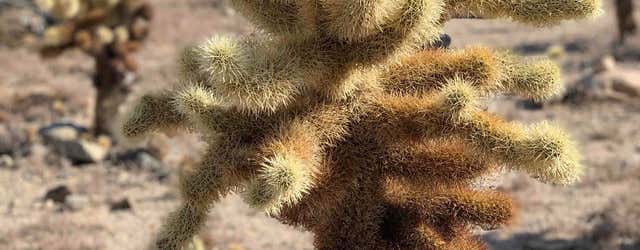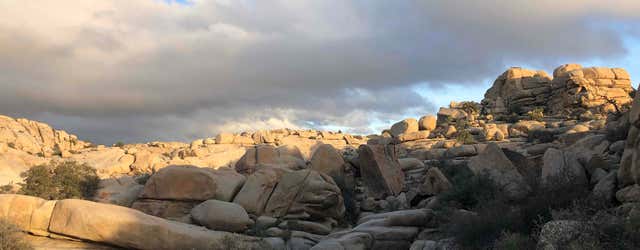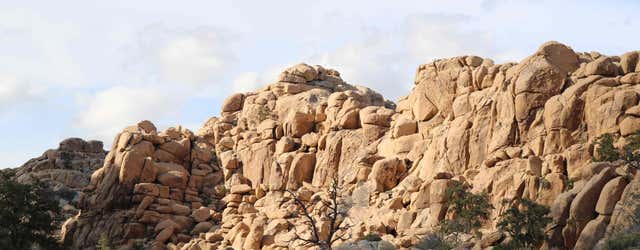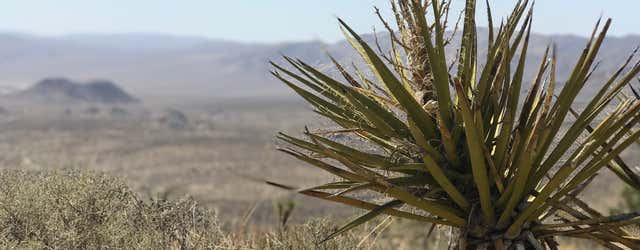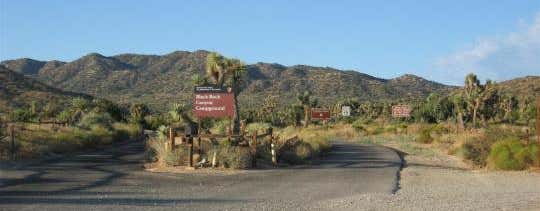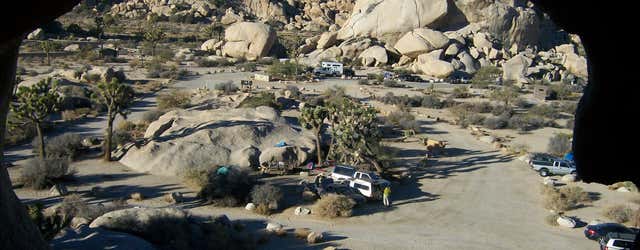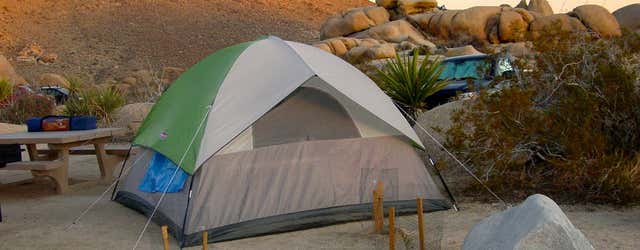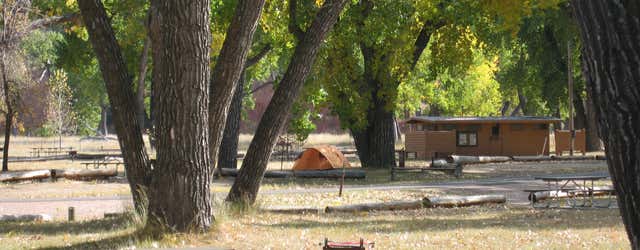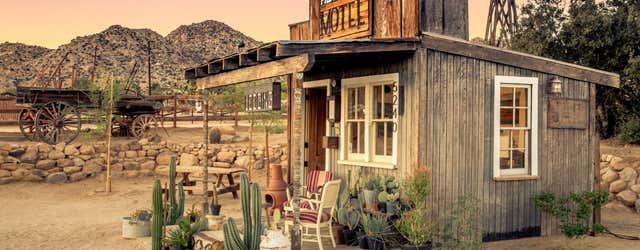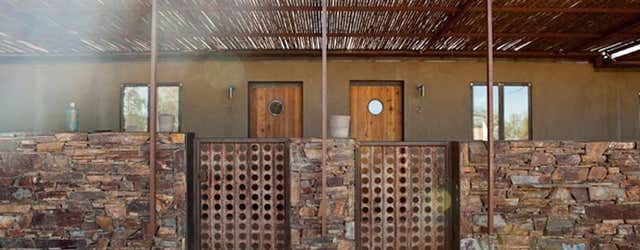If ever a tree inspired the illustrations in the Dr. Seuss story The Lorax, it was the Joshua tree. A desert native, the spindly, spiky Joshua tree is among the oddest-looking members of the plant kingdom. It’s also the namesake and most visible symbol of Joshua Tree National Park.
Located in Southern California and spanning sections of the Mojave and Sonoran deserts, Joshua Tree National Park protects the Joshua tree’s habitat along with many other plants and animals that call the desert home.
The park’s many rock formations are also a magnet for rock climbing and bouldering, while history lovers are drawn to the remains of old mining towns and other reminders of the harsh realities of trying to live in harmony with the desert. Backcountry hiking and exploring unpaved roads via four-wheel-drive vehicles are other adventurous parts of the Joshua Tree experience.
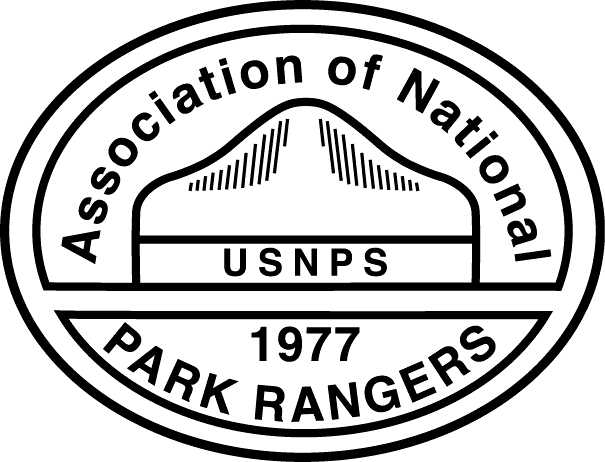
Written for you by park rangers
Who knows a national park best? Yep, the rangers who live and breathe its fresh, clean air every day. That’s who we turned to for help in creating this guide. Roadtrippers has partnered with the Association of National Park Rangers and convinced its rangers to spill their secrets for your benefit.
How to get to and around Joshua Tree National Park
Once you’re in Joshua Tree it feels like the middle of nowhere, but the 1,235-square-mile park is actually pretty close to civilization—under 40 miles north of Palm Springs, 140 miles east of Los Angeles, and 175 miles northeast of San Diego. The park is also a little over 200 miles from Las Vegas and Phoenix to the east.
Whether arriving by air or making the trip by car from the West Coast, Interstate 10 is the most popular route for most of the 3 million people who visit Joshua Tree National Park each year.
The airport closest to the park is Palm Springs International Airport, which is within an hour’s drive and is served by 11 airlines, including most major U.S. and Canadian carriers.
You’ll find more flight choices if you make Ontario International Airport or Los Angeles International Airport your Joshua Tree gateway, but thanks to California’s notorious traffic you should expect a 2- to 3-hour drive from either airport.
Rental cars are readily available at all three airports. If you plan to go off-roading in the park, remember to rent a vehicle with four-wheel drive.
Ontario International Airport is closer and easier to navigate than the sprawling LAX.
When’s the best time to visit Joshua Tree National Park?
The vast majority of visitors to Joshua Tree come between October and April in order to avoid the worst of the summer desert heat. Joshua Tree is open year-round, and most of the park is generally accessible regardless of what time of year you visit.
There’s no rainy season in the park, and most days you can expect clear skies and low humidity. It does get very hot, however. Summer temperatures frequently soar over 100 degrees in the daytime and cool down only to the 70s at night.
Spring and fall temperatures are the most comfortable, averaging about 85 degrees in the daytime and 50 in the evenings. Winter visits generally require warm clothing, with daytime highs of about 60 but dropping below freezing at night. And yes, it can snow in the desert, particularly in the higher-elevation parts of the park.
The park is a winter gathering spot for rock climbers from around the world. November through March means warm, sunny days and a perfect setting for traditional climbing, bouldering, and high-lining.
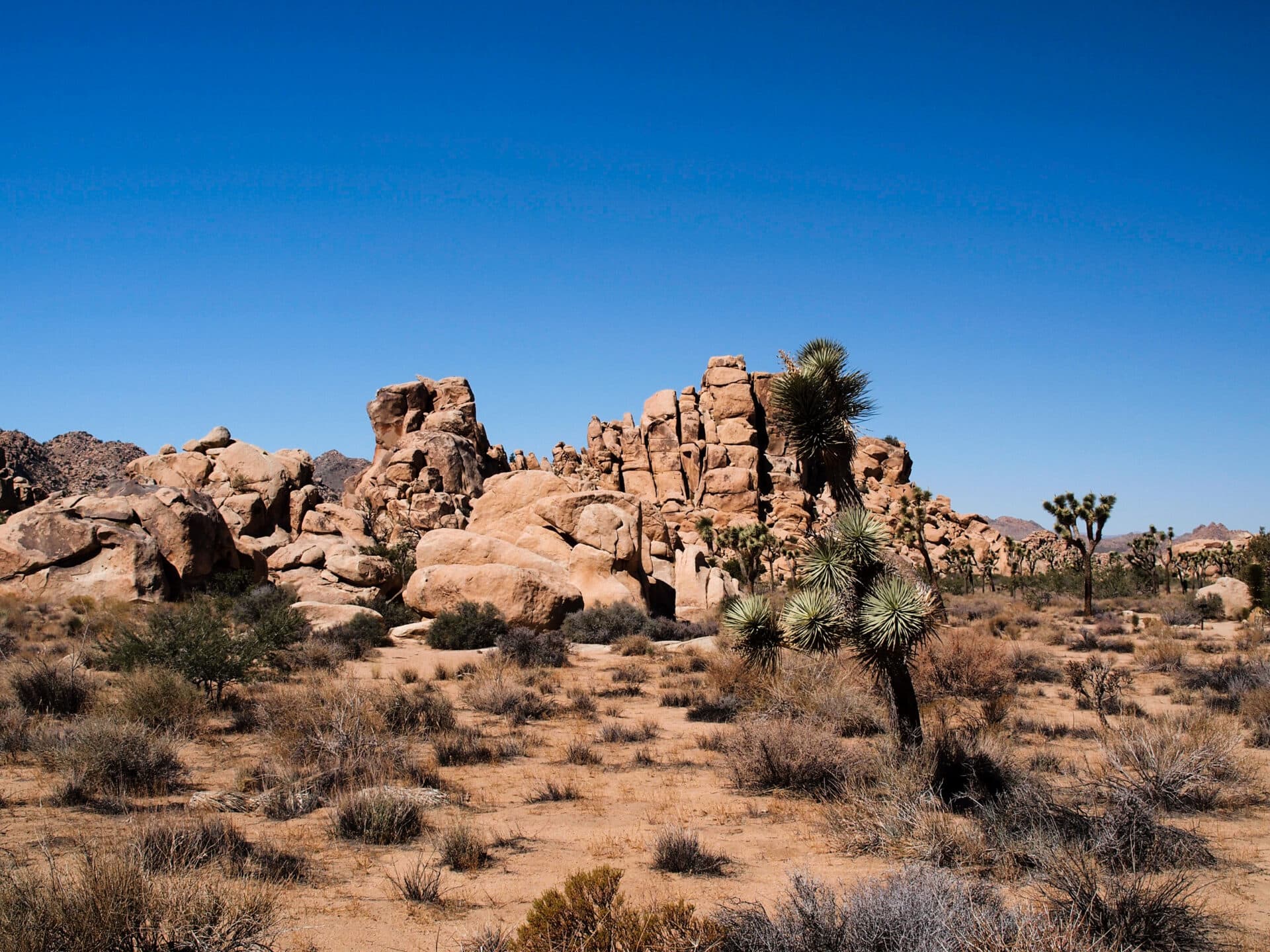
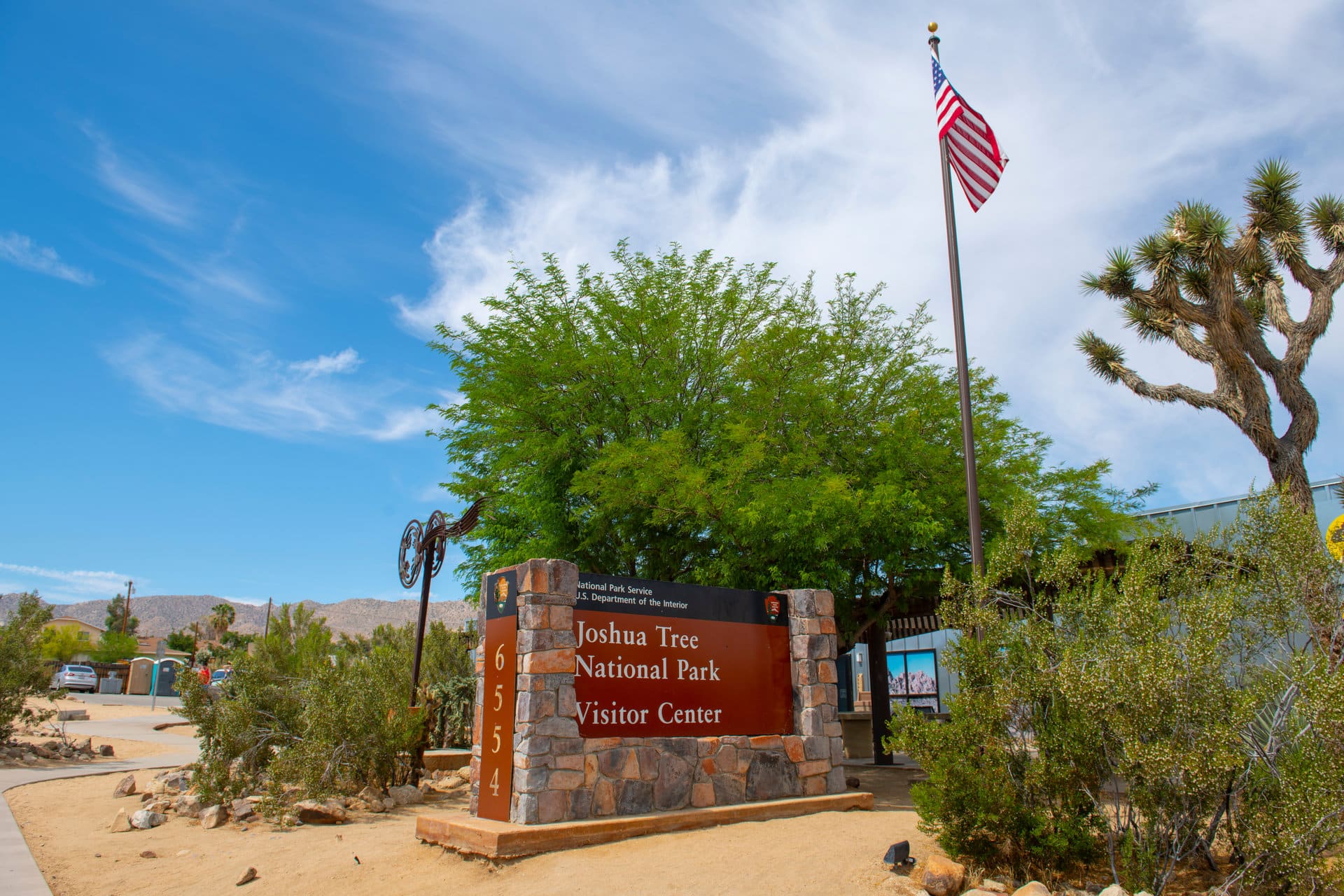
Paved spurs lead from these roads to sites like Keys View, Barker Dam, and Cottonwood Spring; however, the Black Rock Campground, Indian Cove, and Fortynine Palms Oasis areas are inaccessible from the park roads and can be reached only by access roads off of Route 62.
The park includes parts of two distinct desert ecosystems, the Mojave and the Sonoran. The Mojave is the smallest and driest desert of the U.S. Southwest and also includes Death Valley; the Sonoran Desert covers parts of California, Arizona, and Mexico for more than 100,000 square miles. There’s no firm boundary between the two deserts, which overlap in a transition zone that includes much of the park.
Generally, however, the western half of the park is considered the Mojave Desert; this higher-elevation area is where you’ll find the park’s major rock formations, Joshua trees, pinyon pines, junipers, scrub oaks, and prickly pear cactus.
The Colorado Desert, part of the Sonoran Desert, dominates the eastern half of the park. Flatter and lower in elevation, this desert is dotted with creosote bushes, ocotillo, palo verde, and jumping cholla cactus.
The best way to tell whether you are in the Mojave or Sonoran desert is to look for Joshua trees, which grow almost exclusively in the Mojave.
Visitor Center POIs
What to do at Joshua Tree National Park?
The park roads in Joshua Tree not only serve as scenic drives through a variegated desert environment but also offer convenient access to many of the park’s main attractions, including:
Keys Ranch: The Keys family lived for more than 60 years in what is now Joshua Tree National Park and ran both ranching and mining operations. The homestead on the edge of the Wonderland of Rocks formation includes Desert Queen Ranch, Barker Dam (a precious desert reservoir), old mining equipment, and Cow Camp, a cattle ranch that was once a hideout for cattle rustlers.
Keys View: The park’s most popular scenic overlook is a 20-minute side trip off Park Boulevard that rewards visitors with high-elevation views of Coachella Valley, the San Andreas Fault, and maybe even a distant glimpse of Mexico.
Desert Queen Mine: This gold mine operated for more than 75 years. Its remnants include old shafts, tailings, and a variety of abandoned equipment slowly rusting away in the desert. It’s accessible from a 1.8-mile hiking trail on Desert Queen Mine Road, itself a spur off Park Boulevard.
Skull Rock: Erosion pocked this huge granite boulder with holes resembling eye sockets, giving the rock its macabre name. Its location right off of Park Boulevard makes Skull Rock one of the most popular and accessible of Joshua Tree’s many rock formations.
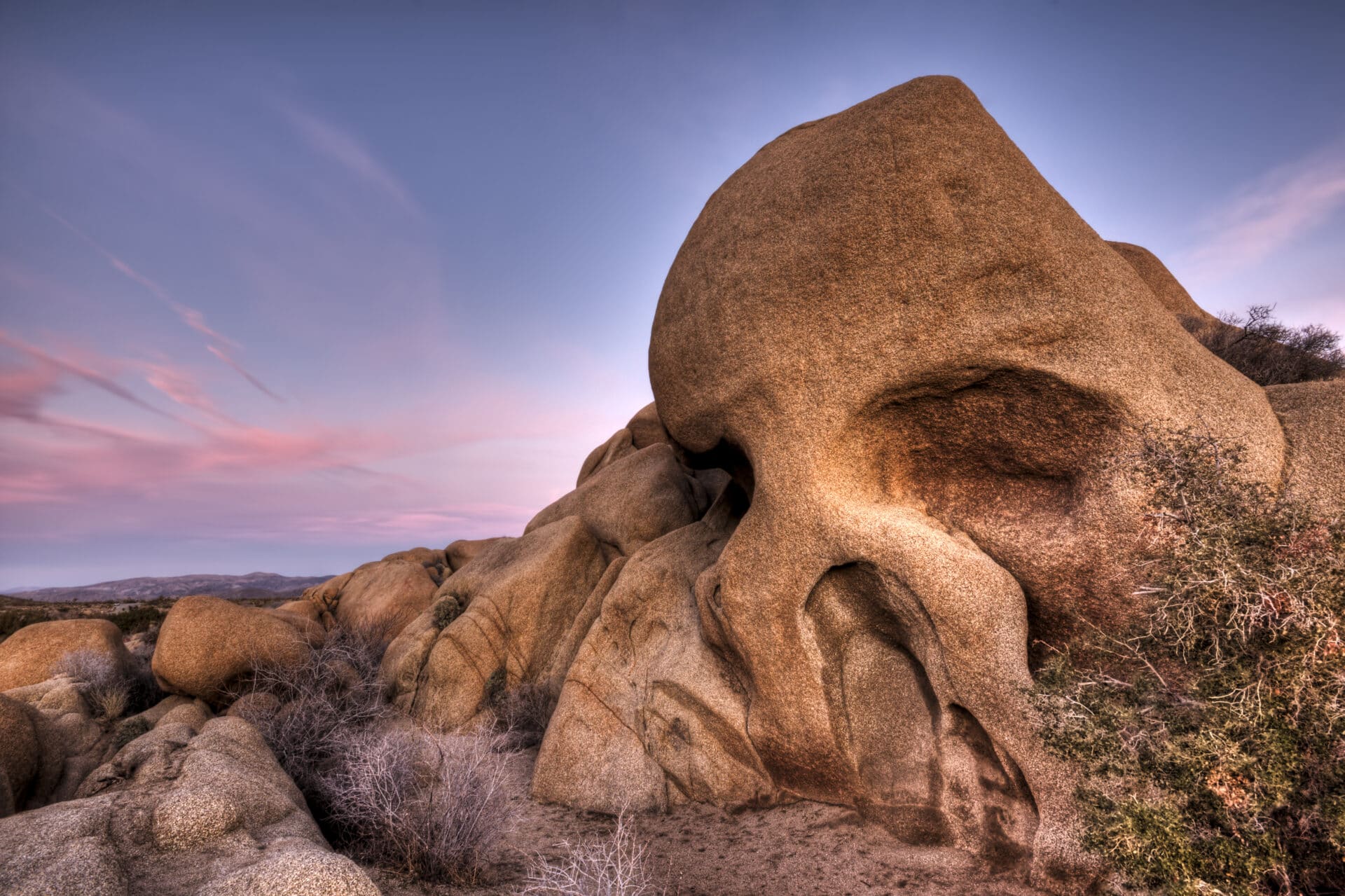
Cholla Cactus Garden: Pinto Basin is home to an unusual 10-acre stand of teddy bear cholla cactus, which can be viewed from the quarter-mile Cholla Cactus Garden Nature Trail.
Cottonwood Spring: Close to the South Entrance of the park, this natural oasis has a campground, nature center, ranger programs, gold mine ruins, and trailheads for hikes to Moorten’s Mill, Mastodon Peak, and the Lost Palms Oasis.
Side trips off of Route 62 are required to reach:
Black Rock Campground: This 99-site campground also serves as an access point for hiking and backcountry camping in the Covington Flat area, including the Hi-View Nature Trail and the long California Riding and Hiking Trail (trailhead is at Black Rock Campground). Covington Flat, which has some of the park’s largest Joshua trees, can also be reached by off-road vehicle from La Contenta Road in Yucca Valley.
Indian Cove: Hiking the half-mile Indian Cove nature trail from Indian Cove Campground offers views of large yucca plants, old Native American settlements, and a chance to spot desert tortoises in the spring and fall.
Fortynine Palms Oasis: Take Canyon Road south of Route 62 to reach the trailhead for the 3-mile, out-and-back hike to this beautiful desert oasis.
Other activities to do in the park
Rock Climbing: The monzogranite rock formations found in Joshua Tree have cracks, crevices, slabs, and sheer faces that make them a delight for rock climbing, bouldering, and high-lining (a form of rope-walking). Playing on the rocks at Joshua Tree isn’t just for expert climbers: Many of the formations can be summited simply by scrambling from one rock piled on another. But the park also includes more than 8,000 established climbing routes and 2,000 bouldering problems, suitable for everyone from beginners to experts.
Driving Desert Roads: Mountain bikers and visitors with four-wheel-drive vehicles can get to seldom-seen parts of Joshua Tree National Park, like Berdoo Canyon, Pinkham Canyon, Queen Valley, Covington Flat, and Black Eagle Mine via a network of rough backcountry roads. The most traveled of these is the Geology Tour Road, an 18-mile loop through Pleasant Valley.
Backcountry: More than half of Joshua Tree National Park—558,000 acres—is designated wilderness and accessible only to backcountry campers and hikers. East of Palo Basin Road are a couple of unpaved roads (Old Dale Road, Black Eagle Mine Road), but beyond that is a vast area of mountainous, trackless wilderness.
Ranger Programs: Park rangers offer a variety of programs year-round at Joshua Tree, including nature talks on topics like birding and geology, tours and guided hikes to historic sites like Keys Ranch and Barker Dam, and evening programs such as storytelling at park amphitheaters and stargazing.
While it’s a common assumption that deserts are places devoid of most life, Joshua Tree supports nearly 750 species of plants, 53 types of mammals, and 45 species of reptiles, including the rare desert tortoise. The place literally teems with life.
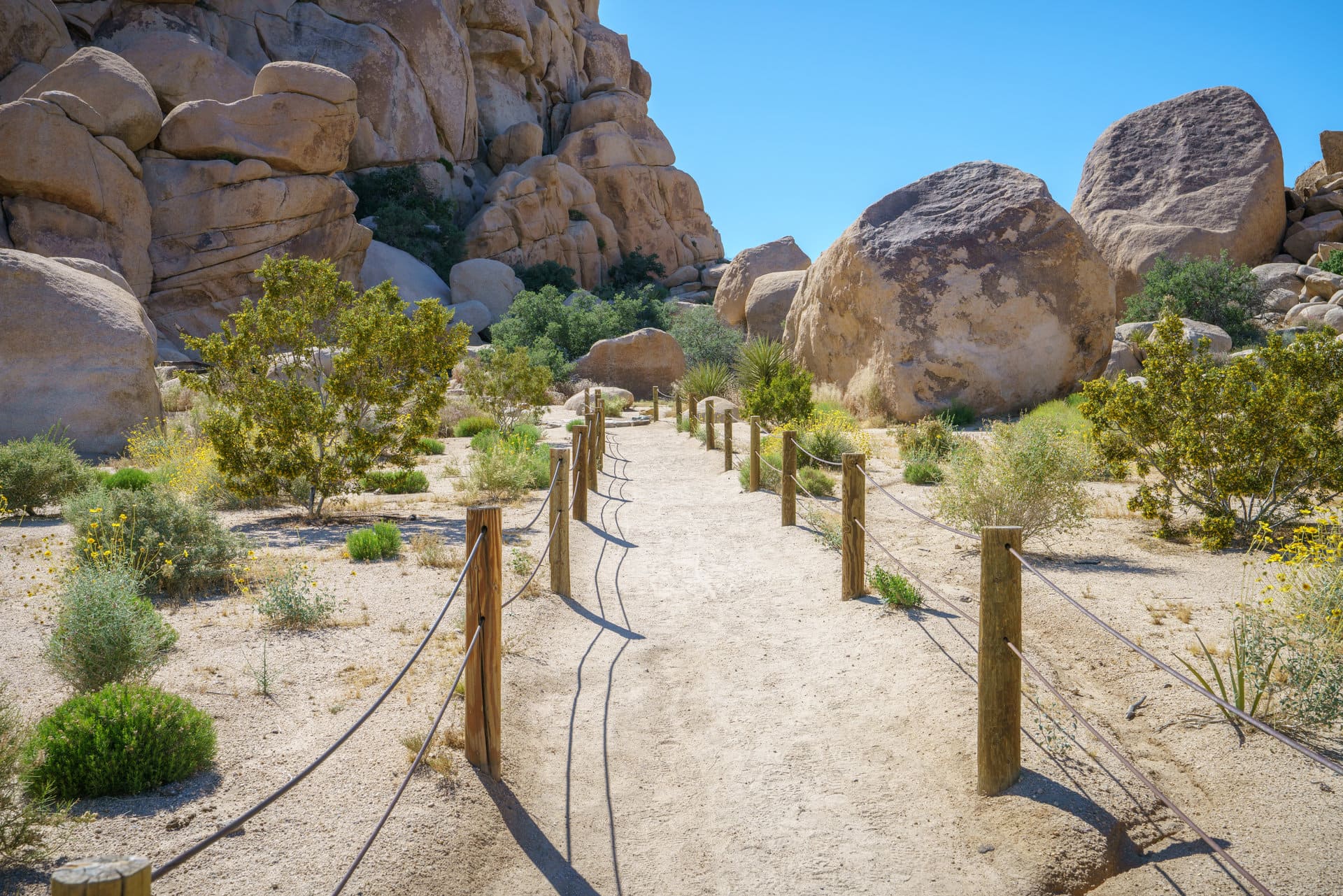
Where to hike in Joshua Tree National Park
Where to hike at Joshua Tree National Park
Hiking is one of the most popular activities at Joshua Tree, where trails lead across harsh but beautiful desert landscapes, through remote canyons, to old mines and settlements, and to hidden oases and towering rock formations. Remember, however, that even the “easiest” hike in Joshua Tree is still a desert hike, so be sure to pack plenty of water and salty snacks, tell someone of your hiking plans, avoid hiking in the peak heat of summer days (between 10 a.m. and 4 p.m.), wear sun protection, and seek shade and rest whenever available.
Easy Hikes
Cholla Cactus Garden: This quarter-mile trail leads to and through a rare patch of teddy bear cholla cactus.
Skull Rock: A 1.7-mile trail that starts near Jumbo Rocks Campground and loops around the rock formation that includes a famous skull-shaped boulder.
Barker Dam: See a historic water tank, dam, and reservoir—and sometimes bighorn sheep at the water’s edge—on this easy 1.1-mile loop trail.
Arch Rock: This 1.4-mile round-trip entails 200 feet of elevation gain and rewards hikers with views of a natural arch caused by erosion.
Hidden Valley Nature Trail: A 1-mile loop trail that leads through rock formations to a former hideout for 19th-century cattle rustlers.
Moderate Hikes
Mastodon Peak: A loop trail off of Lost Palms Oasis Trail leads to the summit of this rocky peak, which offers great views of the southern section of the park. The 3-mile trail includes 375 feet of elevation gain.
Lost Horse Mine: The ruins of a 19th-century gold and silver mine is the destination of this 4-mile out-and-back trail, which includes 550 feet of elevation gain.
Hi-View: This 1.3-mile trail near Black Rock Campground leads 400 feet up to a higher-elevation section of the park with abundant Joshua trees and panoramic ridgeline views to the west.
Strenuous Hikes
Lost Palms Oasis Trail: This 7.5-mile out-and-back trail to an oasis hidden in a canyon is mostly downhill on the way in, but you’ll have to pay for the experience of viewing the lost oasis with a 500-foot climb out of the canyon on the hike back.
Ryan Mountain: You’ll hike more than 1,000 feet up to the top of Ryan Mountain on this trail, but the views from the top are what make it one of the most popular hikes in the park.
Boy Scout Trail: Blazed by Scouts, this one-way, 7-mile trail connecting Indian Cove and Park Boulevard weaves among the house-size boulders of the Wonderland of Rocks area of the park.
GPS devices are prone to error in the park and cell phone service is also extremely limited. When in doubt, trust your map and compass.
Where to stay in and around Joshua Tree National Park?
There are no hotels inside Joshua Tree National Park, so your only option to stay overnight within the park borders is to camp.
That said, the park offers a variety of camping options, from tent and RV sites at established campgrounds to backcountry camping. Nine campgrounds are located within the park, with a total of 500 sites. None have electric or sewer hookups for RVs, and only Cottonwood has potable water for use by campers.
Sites are available by advance reservation on recreation.gov at Black Rock, Cottonwood, Indian Cove, Jumbo Rocks, and Ryan campgrounds. Hidden Valley, White Tank, and Belle campgrounds are first-come, first served. Tent camping fees range from $15 to $25 per night. Black Rock and Ryan have designated horse camps.
There are also a variety of campgrounds outside the park in nearby communities like Joshua Tree, Twentynine Palms, Yucca Valley, and Desert Hot Springs. Some of these have more extensive services for RV campers
The Palm Springs area is under an hour from the park and offers a wide variety of lodging options, from clothing-optional resorts to luxury stays at properties with golf courses, tennis centers, and upscale dining. Closer to the park you’ll find more modest hotels and motels, including:
The Joshua Tree Inn: A rustic Spanish Colonial–style hotel in Joshua Tree that has been welcoming guests since 1949.
The Pioneertown Motel: A motel in a town built as a movie set, which was historically frequented by movie stars in old Westerns.
Starlight Boutique Hotel & Resort: An upscale hotel in Pioneertown with uniquely designed rooms, a pool and hot tub, and comfortable indoor and outdoor gathering spaces.
Mojave Sands Motel: A modern, chic motel with five rooms and an enclosed desert courtyard with a koi pond and communal barbecue and dining area.
Joshua Tree may be in a desert, but that doesn’t mean it’s warm all the time. Winter temps can drop into the 30s, so campers are advised to bring warm bedding.
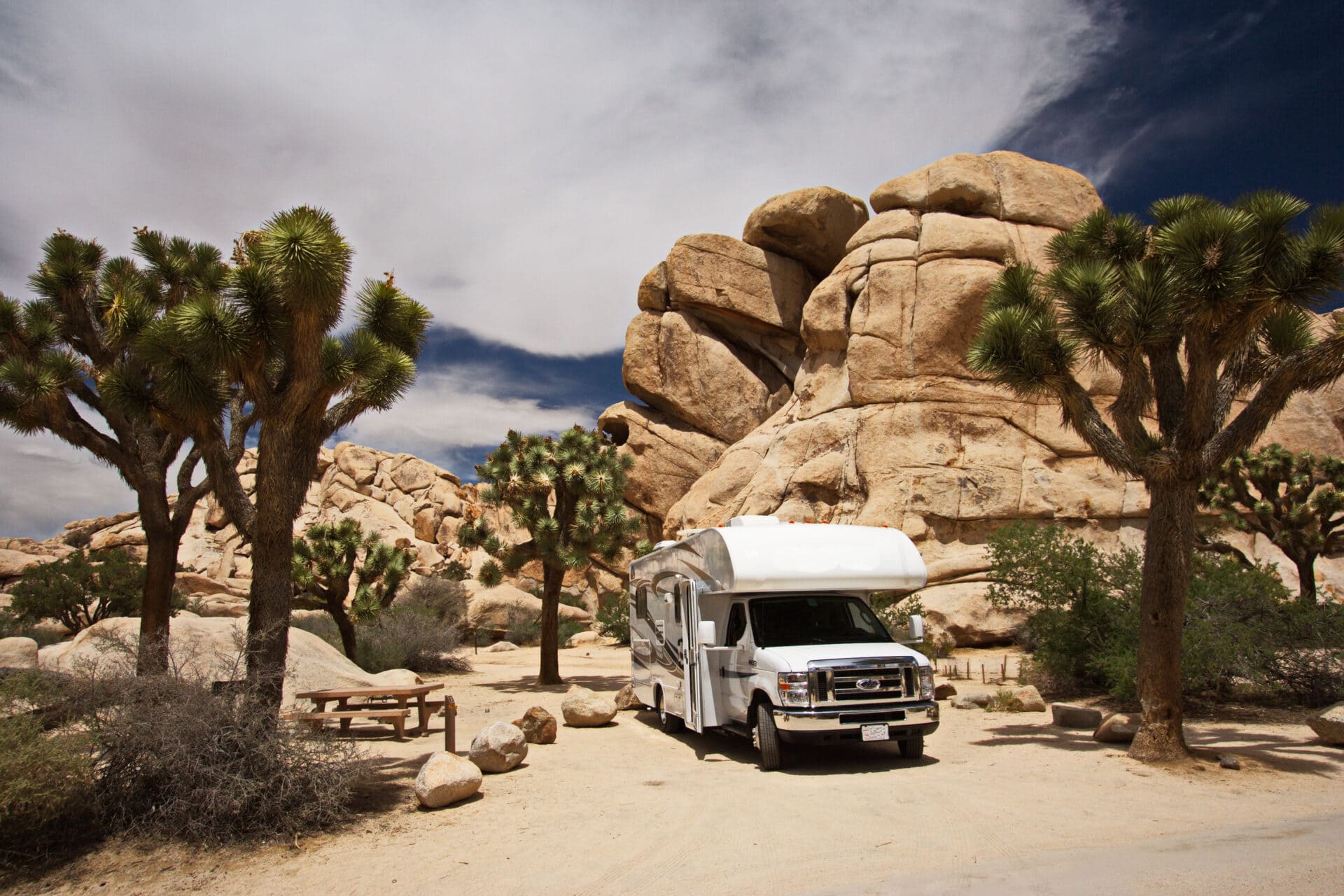
Where to eat in and around Joshua Tree National Park?
You’ll need to bring your own food if you want to eat inside Joshua Tree National Park, which has no restaurants or food stores but does have eight picnic areas—Cottonwood, Indian Cove, Live Oak, Split Rock, Cap Rock, Hidden Valley, Quail Springs, and Black Rock—some with tables in the shadows of the park’s famous rock formations.
Outside the park, dining options include:
The Morongo Valley Cafe: All-day breakfast in an informal, pet-friendly atmosphere.
The Red Dog Saloon: Watering hole and restaurant in Pioneertown.
Dillon’s Burgers and Beers: Two locations in Morongo Valley and Desert Hot Springs deliver what’s in the name.
La Casita Nueva: Top restaurant for Mexican food near the park.
The best place for great food at a reasonable price is the Crossroads Café in the town of Joshua Tree, which serves a variety of burgers, tacos, salads, and sandwiches for lunch and dinner. Another good choice is the 29 Palms Inn, located just a mile from Oasis Visitor Center. The inn, which also welcomes overnight guests, has a more formal vibe than the Crossroads, but the food is good and the quality is consistent.
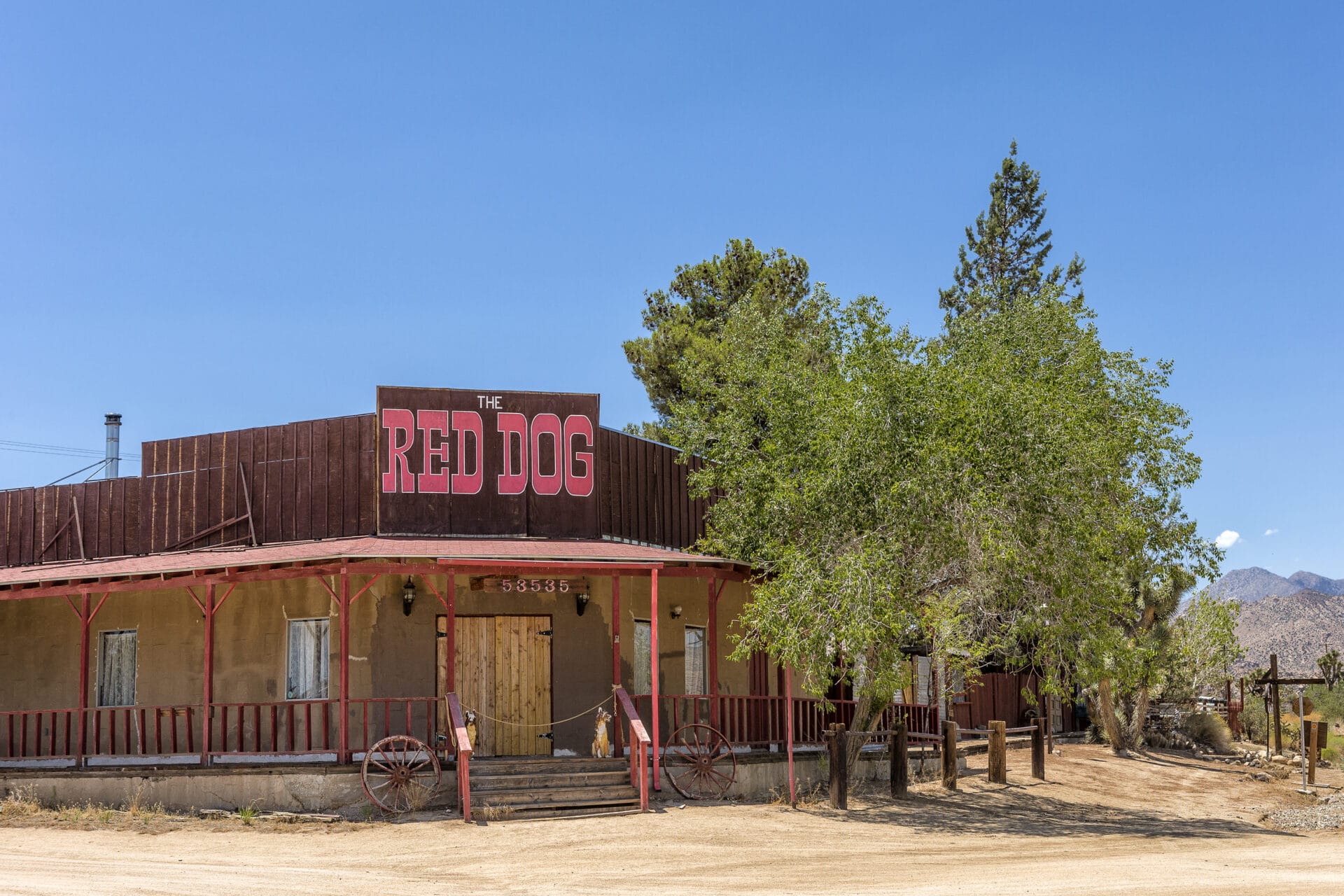
How many days should you plan to spend in Joshua Tree National Park?
Plan at least 2 or 3 days to see the best of Joshua Tree National Park, including hiking trails, historic sites, and drives on and off pavement to experience the desert landscape and backcountry. Ideally, a visit should include at least one night camping under the stars to bask in the park’s peaceful mornings and evenings beyond the most popular visiting hours.
If you have only one day to experience Joshua Tree, that’s still plenty of time to drive the main park roads, make stops at major attractions like Cottonwood Spring, Cholla Cactus Garden, and Keys Ranch, take a couple of short hikes (such as to the Lost Palms Oasis), and spend a little time walking among (and climbing on) the boulders at Jumbo Rocks or some of the other formations near Park Boulevard.
Visitors to this vast desert park should plan at least 2 days to fully explore its geological diversity, historical character, and stunning views.
